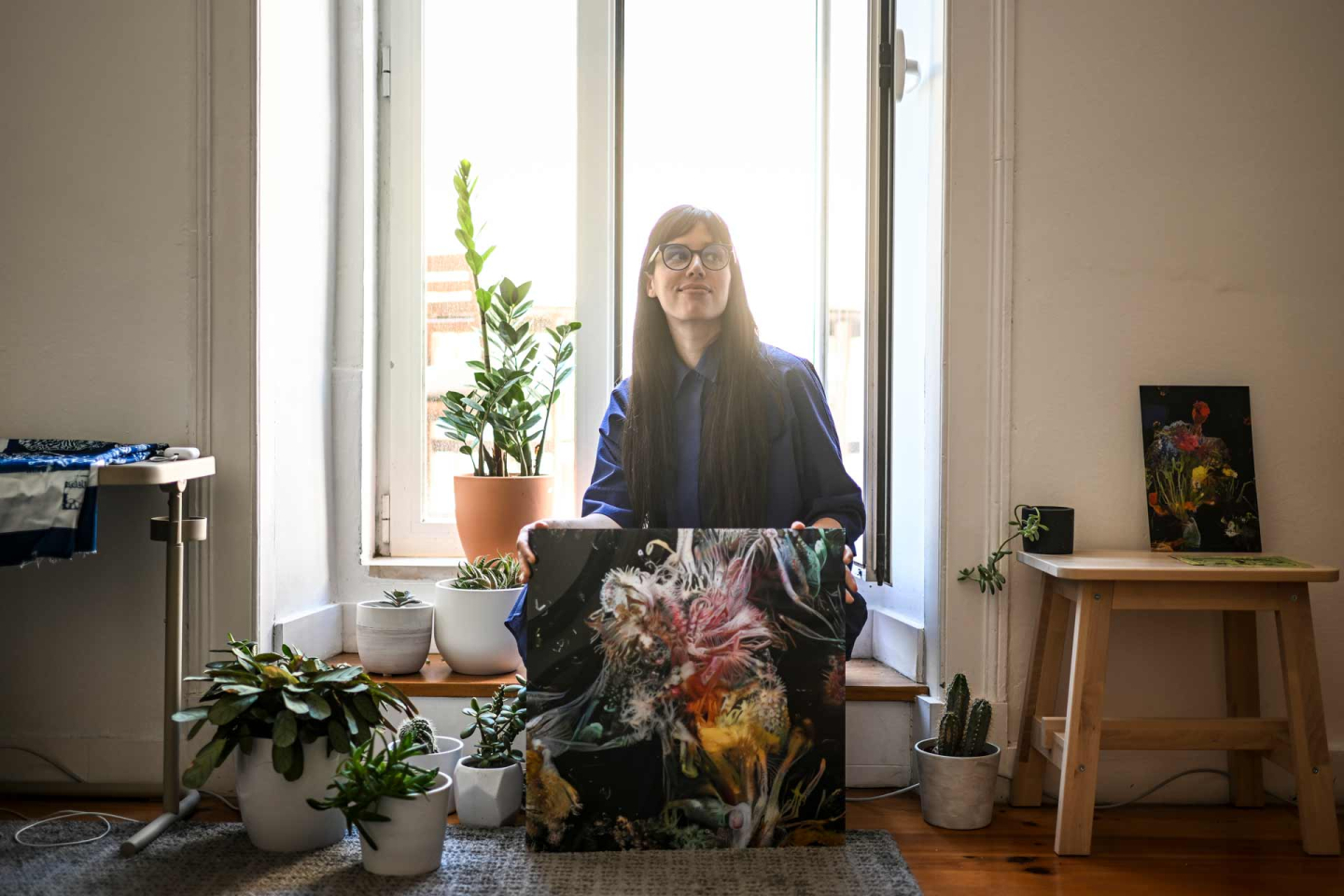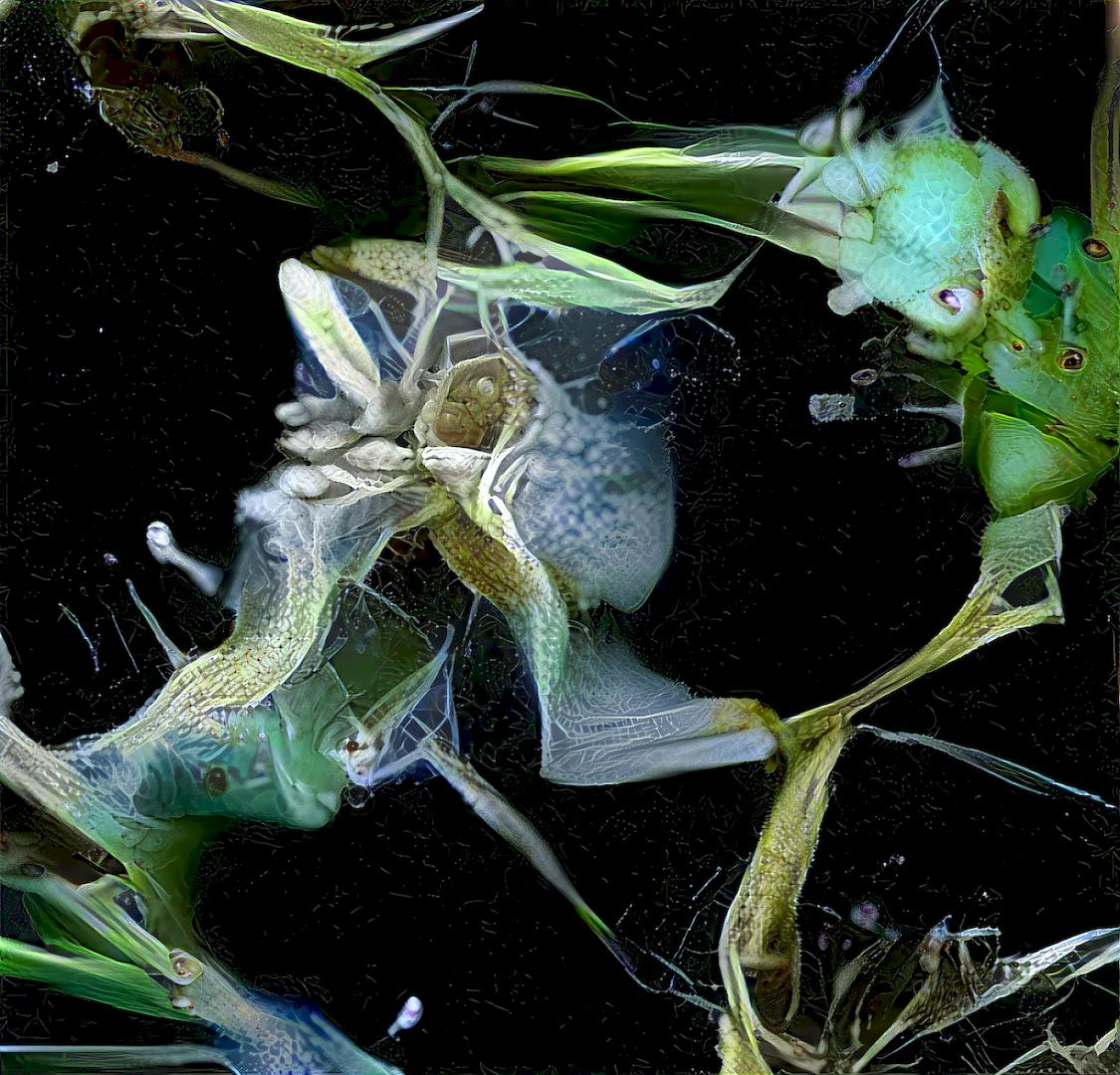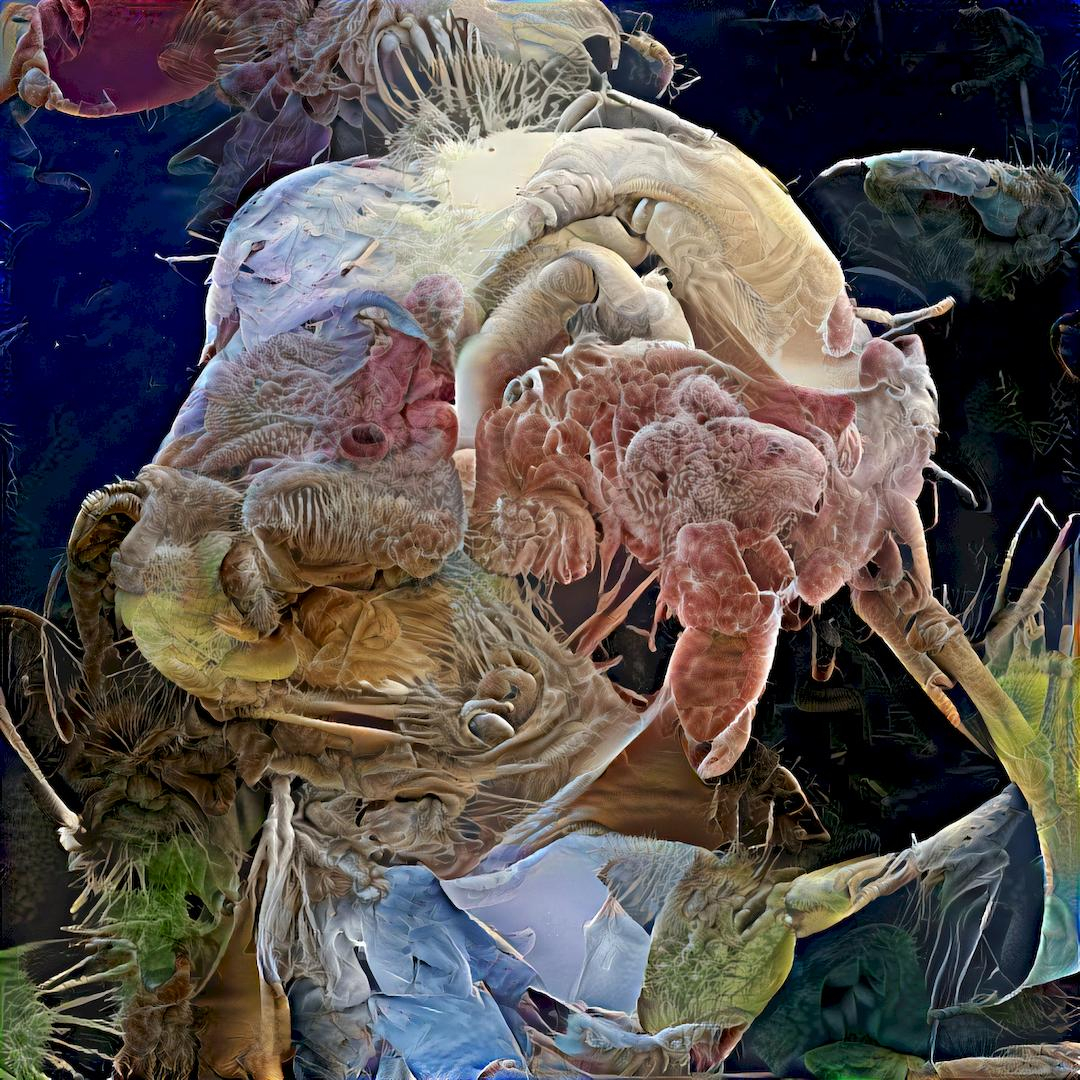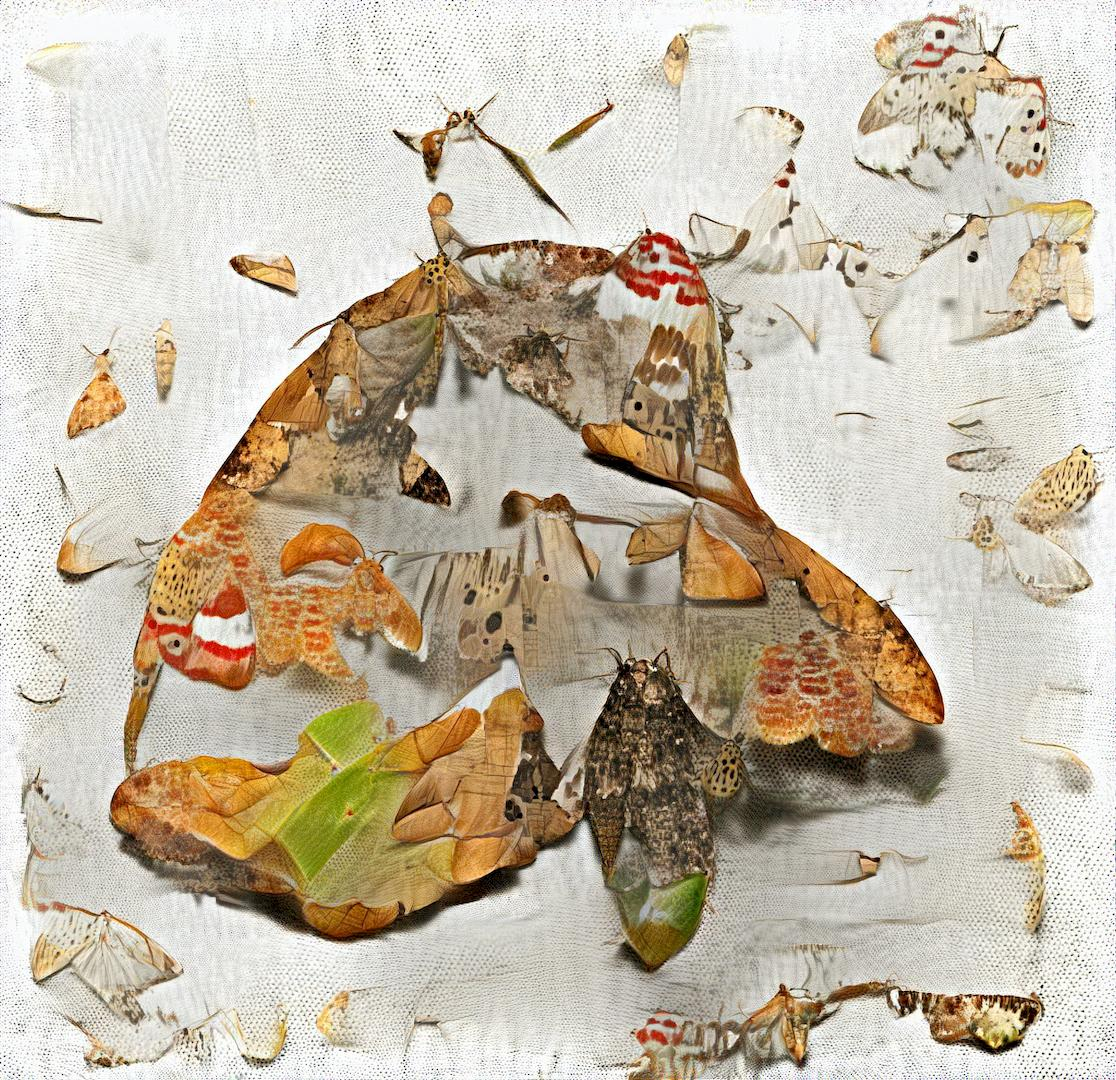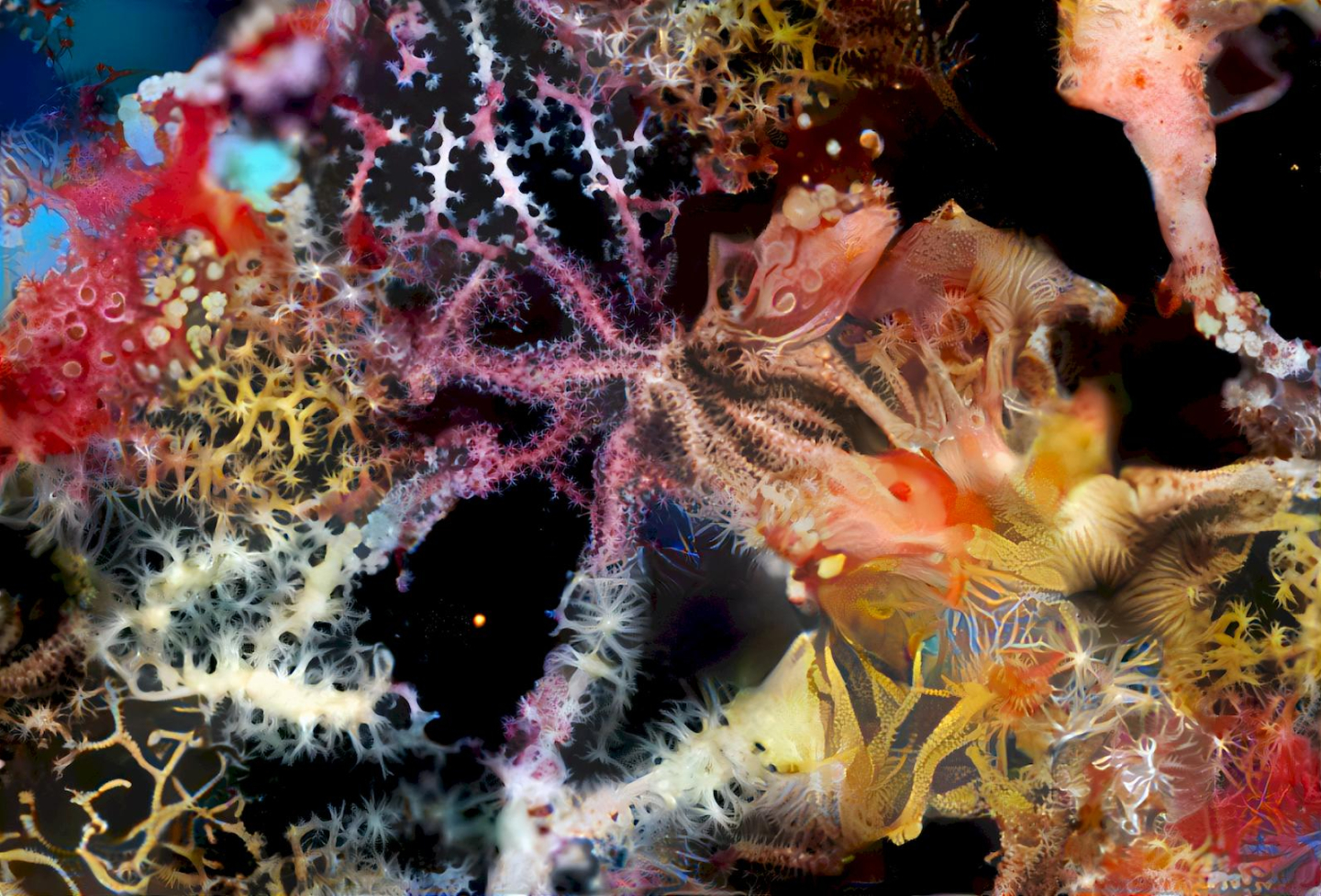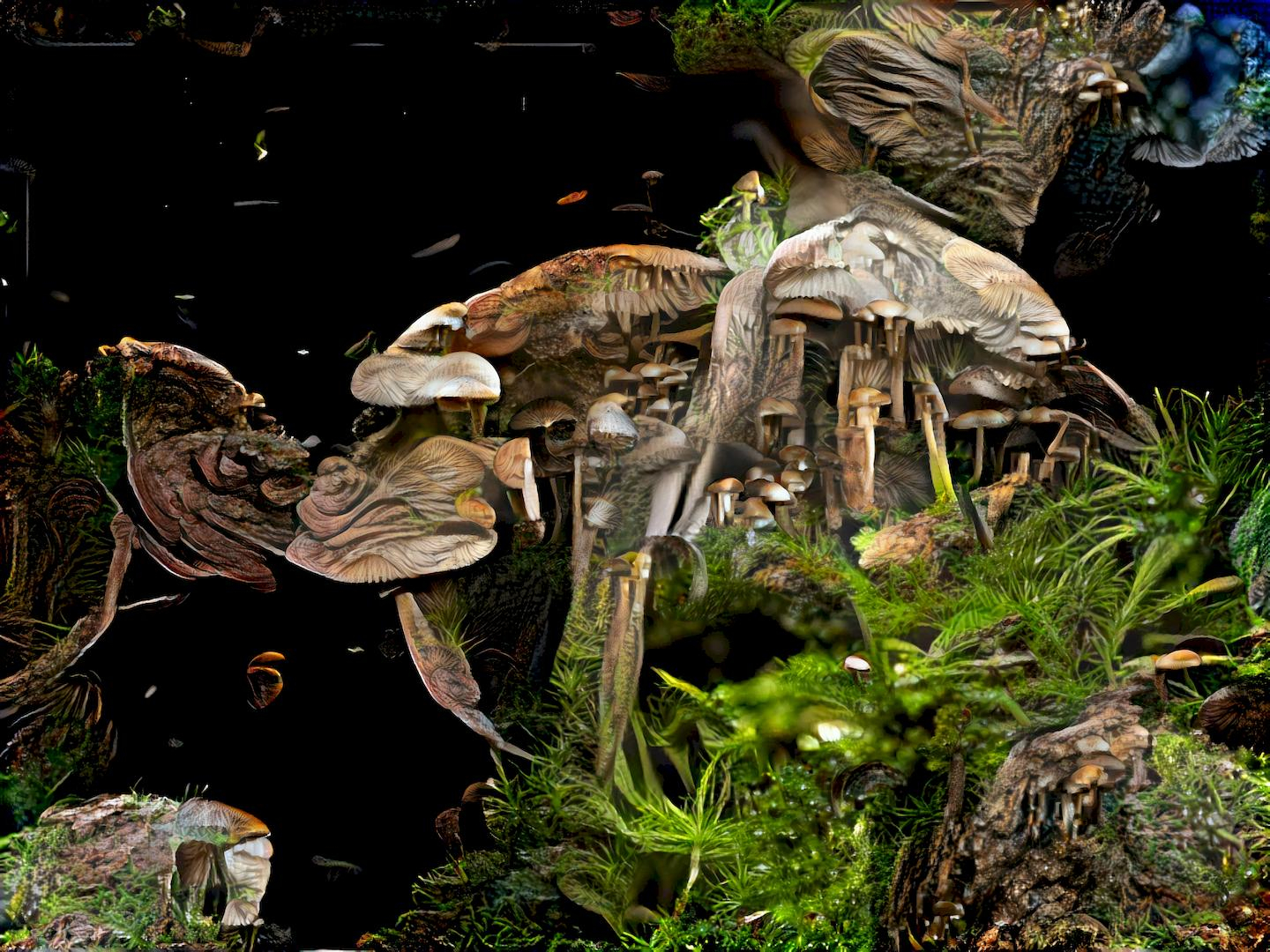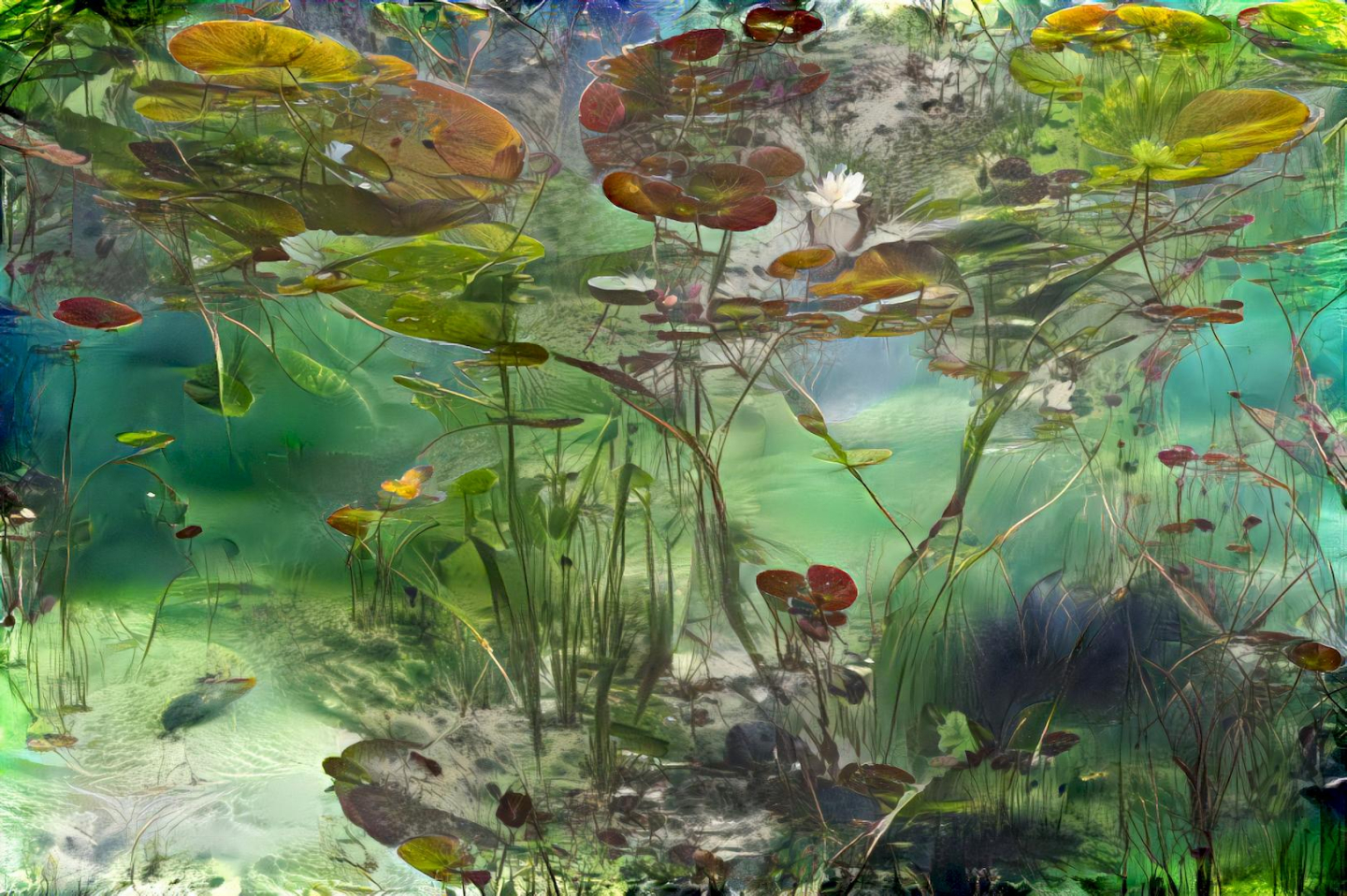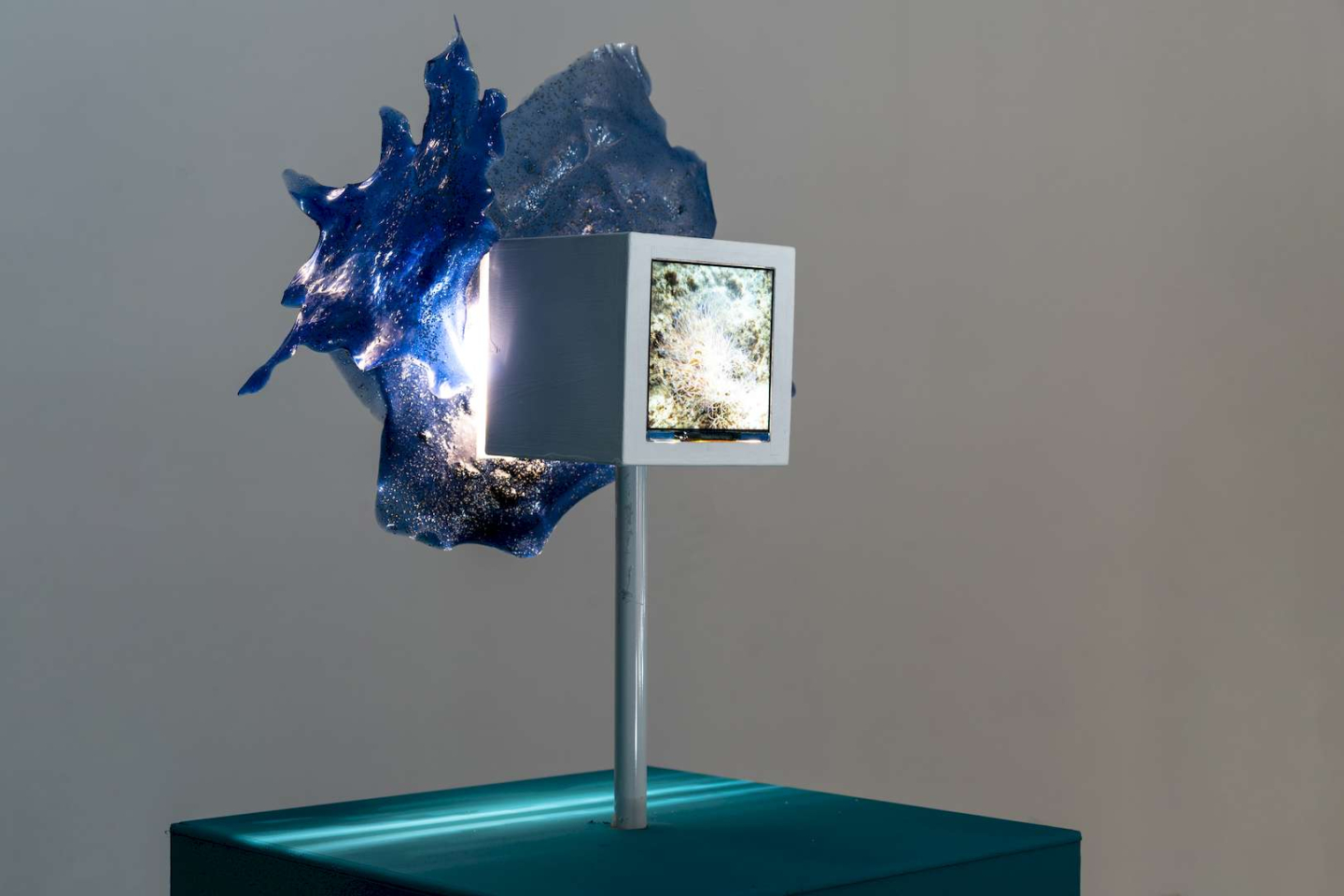The Artwork As A Living System is a retrospective exhibition of the work of Christa Sommerer & Laurent Mignonneau. Since the early 1990s, they have created a rich body of work often centred around artificial life, simulated nature and interactivity.
We want to use the opportunity of this exhibition to bridge this pioneering oeuvre with the present. Which is why we got in touch with Sofia Crespo, who was kind enough to lend us some of her time to talk about her work in an e-mail interview.
Like Christa & Laurent, Sofia has a huge interest in biology-inspired technologies. Based on the recent developments in the field of machine learning, her work brings into question the potential of AI in artistic practice and its ability to reshape our understandings of creativity. One of her main focuses is the way organic life uses artificial mechanisms to simulate itself and evolve, this implying the idea that technologies are a biased product of the organic life that created them and not a completely separated object.
What drives you, and other digital artists such as Christa Sommerer & Laurent Mignonneau, but also William Latham or Miguel Chevalier, to create artificial natures and lifeforms?
Why are people interested in Nature? This fascination seems to extend as far back as the cave paintings, but likely far further back in time, however our records are limited to what we’ve uncovered. Within the arts in general, not just the digital arts, we very often see the more-than-human as a subject, perhaps even more so than the digital. I think, no matter the state of our current (especially urban) world, we still exist in the context of sharing this planet with a nearly unfathomable number of other species, and those of us who find a particular interest in these others naturally gravitate towards them in our work.
Most earlier artists dealing with artificial lifeforms used a series of algorithmic rules to recreate a simplified model of how nature works – the logic of plants geometry, natural selection, genetics, etc. Your own approach is based on machine learning, can you tell us more about it and how it differs from a rules-based logic?
Their approach is one of starting from the bottom, and through painstaking construction of rules, complex lifeforms and ecosystems emerge. My approach is more top-down, using data collected of existing ecosystems, specimens, etc. and “distilling” them through the use of neural networks, extracting essential patterns, features, and interactions. This “distilled knowledge”, or the resulting model, can then be used to generate artificial lifeforms that explore the, in my case, visual essential forms, of e.g. jellyfish, corals, etc.
Among the data you use in your works, there are a lot of images of nature. Could we thus say that, in contrast to Sommerer & Mignonneau, your work is more about our mediated representation of nature, than nature itself?
I think it’s safe to use the term “representation” in the context of the works I create, one of the interesting aspects to me with Artificial Life Forms, is that they touch upon representations of the more-than-human in the digital. We have this notion that the digital, and the physical, are somehow different planes of existence that are somehow fundamentally different. Yet the reality is that no matter how platonic an interface, the digital, and the physical are constantly interacting, influencing, and changing each-other. It’s therefore, to me, important that we see the digital as part of the world's ecosystems. Not just because of the potential for others to share our digital spaces, but because it requires us to take far greater responsibility for how the expanded ecosystem can exist in a sustainable manner.
Eryk Salvaggio says quite accurately that "Every AI generated image is an infographic about the dataset". I think your work also tackles this idea. Beyond the human representation of nature, it’s also about showing (and playing with) the limits of available data.
Absolutely: the (slightly simplified) way of looking at deep learning is “what you give is what you get”, current neural network architectures are unable to reproduce “knowledge” outside of the dataset upon which they were trained. This is akin to our own minds, we struggle to imagine/picture that which is outside the realm of our lived experience. Furthermore, unlike a unthinking, ceaselessly calculating computer, we cannot easily process vast amounts of data.
It’s therefore easy, if you listen to much of the hype and reporting around technology, that after the advent of the now outdated term “big data” we have sufficient data, and now, seemingly miraculous new technologies (generative AI) to do nearly anything. This is far from the truth, the reality is that even the largest datasets are massively lacking in terms of breadth, depth, complexity, and crucially, diversity.
One of the responsibilities of working as an artist with these new technologies is for me one of making tangible the limits, not only of the technology, but also mapping the boundaries of what we know. For example, with the work ‘critically extant’, even the largest open dataset with permissive licensing (over 2.7 million images across 10.000 species) produced a (then cutting edge) AI model which proved wholly inadequate at generating representations of critically endangered species outside the most common, familiar examples. In short: we have so little real data of the natural world around us, that should we lose species, we almost certainly will have immense difficulties in even remembering them, or what they looked like.
Datasets are indeed at the heart of the current debate around “AI art”. The way they are assembled, curated, processed raises many ethical issues connected for example to intellectual property or as you mentioned, diversity. Can you tell us more about how you have been building your own datasets in the context of your projects?
As mentioned, there’s so much of the natural world of which we have no real data, and much data, whilst public domain, is buried in scanned archives, or spread out across a myriad of hard-to-find sources. Therefore an ever more core part of my practice has been creating my own datasets, which has entailed everything from working with scientists and other artists, to diving, hiking, and generating (in some extreme cases) artificial datasets.
This has also been important to me, as it means that part of my practice is to explore ecosystems (often aquatic), through diving, and other means. And not only taking data collected, but also the experiences, and combine these into the resulting works.
A challenge I think you share with Sommerer & Mignonneau is that you both aim to attract attention toward our endangered ecosystems, while making use of cutting-edge technologies that are also regarded as damaging for the environment (in their manufacturing and energy consumption). How do you tackle it, and bridge it in your work?
It’s important to note that the impact of technology, as well as what we consider possible in the here-and-now stems from how we use said technology. With new technologies constantly appearing, or evolving, it’s important to show alternative uses, as well as make tangible their limitations, their capabilities, and how perhaps we can have a more sober, informed approach to them. Naturally, the impact of my work, compared to any corporation that uses similar technologies, is virtually non-existent as most of the models I train are trained in my studio, using a relatively tiny amount of hardware. That isn’t to say there isn’t an impact in terms of energy consumption, but it is one I’m constantly trying to find new ways to reduce, whilst still being able to critically engage with the world as it changes, evolves.
For the project Beneath the Neural Waves, you also experiment with biomaterials to create a series of sculptures.
In terms of physical works, it has been a slow, but steady trial-and-error process of trying to use new/alternative materials to produce sculptural/physical works. Naturally, working with natural materials is very challenging, and often doesn’t work in ways I’d expect, or hope they would. So my sculptural work so far can be best described as a series of ongoing attempts at reaching a more general sustainable result, however, I’m far from satisfied, and hope to be able to push this aspect far further going forward.
At the heart of artworks dealing with digital lifeforms, you often find a certain kind of relationship between humans and nature. Sommerer & Mignonneau show our potential interactions with ecosystems and the impact we can have on them. William Latham describes another relationship: his practice as “artist as gardener”, selecting and breeding generated forms the way a plant breeder produces flowers. Would you say there is also such a relationship in your own work?
I love the gardener approach, but as my work tends to be the result of many ongoing, often messy and complex interactions with the more-than-human world (from my personal experiences, to the creation and curation of datasets in situ, to physical interventions), it’s more about trying to find ways to unveil the wondrous that constantly surrounds us. I cannot not be a human, in a more-than-human context, but I try to find ways to not reinforce the notion of a human-nature divide, but rather one of soft, intermingling boundaries between ourselves and Others.
Acknowledgements
Thanks to Sofia Crespo!
Image credits:
- portrait by Patricia De Melo Moreira
- all artworks from the Neural Zoo series by Sofia Crespo, courtesy of the artist
- except last picture, from Beneath the Neural Waves by Entangled Others. Photo by Julian Fallas
Interview: Yannick Antoine
